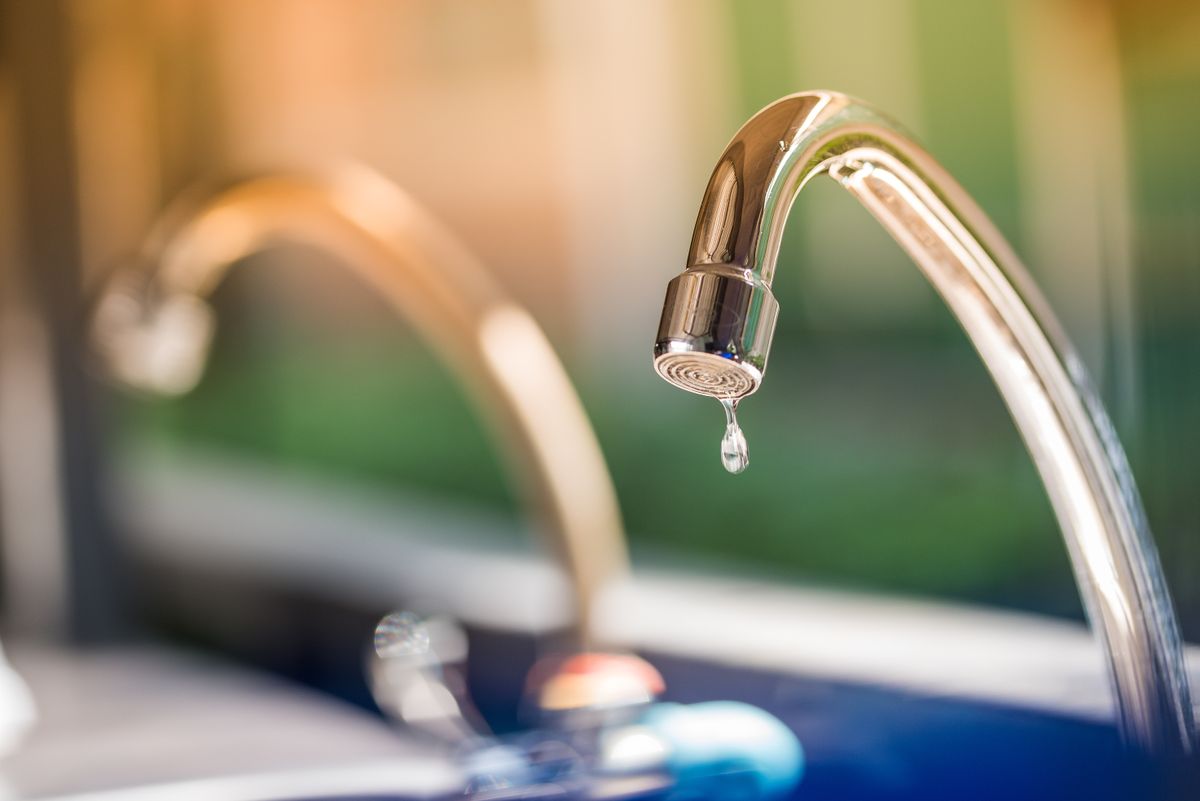What're your thoughts and feelings about How to Fix a Dripping or Leaky Faucet ?

Leaking taps might look like a minor inconvenience, but their effect exceeds simply the annoyance of the noise. From drainage to sustaining unneeded monetary costs and wellness risks, overlooking a trickling faucet can result in numerous effects. In this short article, we'll look into why it's essential to address this usual house problem promptly and successfully.
Wastage of Water
Environmental Influence
Dripping faucets contribute considerably to water wastage. According to the Environmental Protection Agency (EPA), a solitary faucet dripping at one drip per secondly can lose more than 3,000 gallons of water each year. This not only strains water sources yet likewise affects ecological communities and wildlife depending on them.
Financial Costs
Increased Water Costs
Past the environmental influence, dripping faucets can blow up water bills considerably. The built up wastefulness over time converts into higher energy expenses, which might have been stayed clear of with timely repair work.
Possible Residential Or Commercial Property Damages
Moreover, extended dripping can cause damage to components and surface areas surrounding the tap. Water buildup can trigger discoloration, corrosion, and also architectural concerns if left unattended, leading to added repair work expenses.
Health Problems
Mold And Mildew and Mold Development
The continuous existence of wetness from a dripping tap produces a suitable atmosphere for mold and mildew and mold growth. These fungis not only endanger indoor air top quality but likewise position health and wellness threats, especially for individuals with breathing problems or allergies.
Waterborne Illness
Stationary water in trickling faucets can end up being a breeding place for bacteria and other microorganisms, boosting the threat of waterborne conditions. Pollutants such as Legionella microorganisms grow in stationary water, possibly leading to significant ailments when ingested or inhaled.
Do it yourself vs. Specialist Repair service
Benefits and drawbacks of Do It Yourself Fixing
While some might attempt to take care of a leaking faucet themselves, do it yourself repair work feature their very own collection of difficulties. Without appropriate expertise and tools, DIY attempts can worsen the problem or result in insufficient repair work, prolonging the problem.
Benefits of Working With a Professional Plumber
Employing an expert plumber makes sure that the underlying cause of the leaking faucet is dealt with properly. Plumbings have the expertise and tools to detect and fix tap issues efficiently, saving time and reducing the risk of more damages.
Step-by-Step Overview to Taking Care Of a Dripping Faucet
Tools Called for
Before attempting to take care of a trickling tap, collect the necessary devices, consisting of a flexible wrench, screwdrivers, substitute parts (such as washing machines or cartridges), and plumber's tape.
Usual Faucet Issues and Their Solutions
Identify the type of tap and the specific concern causing the drip. Typical troubles include worn-out washing machines, rusty shutoff seats, or defective O-rings. Refer to producer directions or on the internet tutorials for step-by-step guidance on fixings.
Safety nets
Regular Maintenance Tips
To avoid dripping taps, execute regular maintenance such as cleaning aerators, evaluating for leaks, and replacing damaged parts promptly. Furthermore, consider mounting water-saving devices or updating to extra effective fixtures.
Significance of Prompt Services
Resolving leaking faucets as quickly as they're noticed prevents further water wastage and potential damage, eventually conserving both water and cash in the future.
Effect On Residential Property Worth
Understanding of Well-Maintained Home
Keeping a residential property in good condition, including attending to upkeep issues like dripping faucets, enhances its perceived value and value among potential purchasers or lessees.
Influence on Resale Value
Features with well-maintained plumbing components, including faucets, command greater resale values in the property market. Resolving trickling taps can contribute to a favorable impact during residential property examinations and settlements.
Ecological Duty
Individual Payment to Preservation
Taking duty for dealing with dripping taps straightens with more comprehensive efforts toward water preservation and ecological sustainability. Every individual's actions collectively make a substantial impact on protecting precious sources.
Lasting Living Practices
By focusing on punctual repair work and taking on water-saving practices, people contribute to lasting living practices that profit both present and future generations.
Conclusion
Dealing with a trickling tap surpasses mere benefit; it's a crucial action toward conserving water, decreasing financial prices, and guarding wellness and residential or commercial property. Whether with DIY fixings or expert support, taking action to repair dripping taps is a small yet impactful means to advertise liable stewardship of sources and contribute to a healthier, extra lasting future.
How to Fix a Leaky Faucet: Step-by-Step Repair Guide
A leaky faucet may seem like a simple annoyance, but if it's not fixed promptly, that leak could cost hundreds to potentially thousands. From water damage to mold, mildew, and high water bills, even a tiny leak can be catastrophic if left unattended. Damage like this can even affect the overall value of your home, so it's important to take the right approach for leaky faucet repair. You may need the help of a plumber in some cases, but we've got a few tips you can try on how to fix a leaky faucet before calling the pros.
Four Faucet Types
When you're learning how to fix a leaky faucet, the first step is knowing what kind of faucet you're working with! There are four common types.
Cartridge Faucets
Cartridge faucets come in one- or two-handled varieties. In one-handled cartridge faucets, hot and cold water combines in a single cartridge. In the two-handled versions, hot and cold water are controlled separately and mixed in the faucet.
Ball Faucets
Ball faucets have a single lever you push up and down to adjust the pressure and rotate to change the temperature. A slotted metal ball controls the amount of water allowed into the spout.
Compression Washer Faucets
They're the oldest type of faucet, but they're still used in many homes — especially older ones. Compression faucets have two separate handles that, when turned, raise or lower the washer that seals a water valve. This valve stops water from flowing through the faucet when it is turned off.
Disc Faucets
Disc faucets rarely need to be repaired due to their maintenance-free design. The water flow is controlled by two discs — the upper one raises and lowers against a fixed lower disc, creating a watertight seal. If your disc faucet starts leaking, you may need to replace the seals or clean residue buildup from the inlets.
Fixing a Leaky Faucet
Step 1: Turn Off the Water
Whether you're learning how to fix a leaky bathtub faucet or how to fix a leaky kitchen faucet, always turn off the water supply to your working area when you're fixing a leak. The last thing you want is a flood added to your list of things to fix.
Look for the shutoff valves below your sink or around the tub and turn them clockwise to stop the water flow. If your faucet doesn't have shutoff valves, you may need to turn off the water for the whole house. Check to make sure it's off by turning the faucet on. If nothing comes out, you're ready to start the repair.
Step 2: Take Apart the Faucet
How you disassemble your faucet depends on the type of fixture you have. You can use a flathead screwdriver to remove the caps on top of the handle or handles for cartridge and compression faucets. Inside, you should see handle screws. Unscrew these with a screwdriver to remove the handle.
Disc- and ball-style faucets will typically have an inlet screw near the handle, and removing that will reveal the interior of the faucet.
Detach the Valve Stem
For cartridge- and compression-style faucets, you'll see the inner valve stem or cartridge once you remove the faucet handles. If you have a compression faucet, unscrew the brass valve stem. If you have a cartridge faucet, pull out the cartridge. If your cartridge has been in place for a while, it may require some tools or extra force to remove it due to mineral deposits.
Examine and Replace Parts
Once you've removed the parts, check them out to confirm what needs to be replaced. You may see corroded rubber washers, O-rings, stems, or cartridges. On a ball-style faucet, check the seats and springs for damage.
If you need to repair a leaky disc faucet, check the inlet and seals on the lower disc.
Once you determine what parts must be replaced, visit your local hardware store. Bring the damaged parts with you to ensure you can purchase the correct components to replace them.
Clean Valves and Faucet Cavity
If you've removed a stem or cartridge, you may notice mineral buildup in the faucet's threads. Use white vinegar to clean the valve seat by soaking it for a few minutes, then scrub it away with a soft toothbrush and rinse with warm water. You can also clean the interior of the faucet in the same way.
Reassemble the Faucet
Once your faucet is cleaned and the required parts have been replaced, it's time to reassemble it. Put the pieces back together and slowly turn the water supply back on. Doing this slowly is crucial because too much initial water pressure can damage the new hardware you've just installed.
https://homewarranty.firstam.com/blog/how-to-fix-leaky-faucet

Do you enjoy reading up on How to Fix a Dripping or Leaky Faucet ? Try leaving a review further down. We would be delighted to know your reactions about this content. In hopes that you come back again soon. Sharing is caring. One never knows, you will be helping someone out. I value reading our article about .